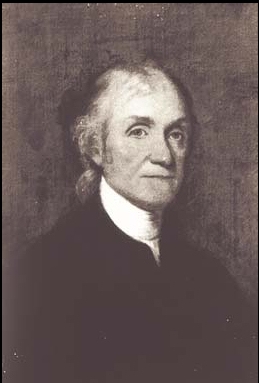A Brief History of Unitarian Universalism
Unitarianism and Universalism each have a direct history from the era of the Protestant Reformation of the 16th and 17th centuries, but also trace their traditions through all who have questioned the conventional religion with which they were raised. For this reason, while these two originally Christian denominations have different histories, they also have a shared history.
Unitarian History
The Unitarian movement opposed the doctrine of the Trinity, which had been adopted in 325 AD. At that time, Trinitarians, who believed in "God the Father, God the Son, God the Holy Ghost," declared those who stressed the unity of God (later known as Unitarians) to be heretics. The movement ebbed and flowed through the centuries, rising again during the Protestant Reformation, and always met with persecution. Michael ServetusMichael Servetus, who was burned at the stake in 1553 for writing “On the Errors of the Trinity,” is considered the first Unitarian martyr. In the 16th century, Unitarian beliefs under a variety of names appeared in Switzerland, Britain, Hungary and Italy, despite persecution. A tolerant political and religious climate in Transylvania made it possible for the first Unitarian church to be established in 1638 under the Unitarian King Sigismund.
In 17th and 18th century England, Unitarian numbers grew. Intellectuals and leaders such as John Milton, Isaac Newton, John Locke, and Florence Nightingale were all people who fought for religious tolerance and are considered part of the Unitarian movement. By the first decade of the 19th century, twenty Unitarian churches had been established in England and many others had taken a Unitarian stance.
Joseph Priestley, a Unitarian minister better known as the discoverer of oxygen, brought Unitarianism to America after nearly being killed in England for his beliefs. Priestley established the first openly Unitarian church in America in Philadelphia in 1796.
Universalist History
The Universalist movement was organized around the principle of universal salvation. Origen (Origen Adamantius, AD 185–254) was an early Christian African scholar and theologian, and one of the most distinguished writers of the early Church. He argued that there was no hell and talked of a benevolent God who would offer salvation to all people.
As with Unitarianism, in the 17th and 18th centuries the Universalist view also grew in popularity. In 1759, in England, James Relly published "Union," which denied the Calvinistic doctrine of salvation for the few and claimed that all would be saved.
John MurrayJohn Murray, a follower of James Relly, brought Universalism to America, becoming the minister of the Independent Christian Church of Gloucester, Massachusetts in 1779. This was the first organized Universalist church in America.
The Merger
In the 19th century, both Unitarianism and Universalism took on an association with the causes of social justice that still defines the denomination. Moving beyond the debate between the Trinitarians and Unitarians and the arguments for and against universal salvation, in a new religious and political climate these liberal religious movements became the champions of the abolition of slavery, women's rights, and penal reform, bringing the two groups closer together in a common cause of religious liberalism and social justice. Both had become official denominations in North America during the 19th century. The American Unitarian Association (AUA) formed by associated Unitarian congregations in 1825, and the Universalist General Convention, formed in 1866 (renamed the Universalist Church of America in 1942).
Since the middle of the 1800s, there had been several attempts to merge the Universalist and Unitarian Churches. Previously there were many cases of ministers switching between the two denominations without difficulty, including Thomas Starr King, who started out as a Universalist before taking a Unitarian pulpit in San Francisco in the mid-1800s. In the 1900s the two movements worked collaboratively on religious education curricula that were designed for both Unitarian and Universalist congregations. The youth movements of each combined to form LRY, or “Liberal Religious Youth.” After years of discussion and negotiation, a joint convention was held in Syracuse, New York, and in 1961, the two organizations merged to form the Unitarian Universalist Association.
Unitarians and Universalists in Canada
Before 1961, Unitarian and Universalist congregations in Canada were associated with their respective denominations based in the United States, and most were involved in the merger and joined the Unitarian Universalist Association. The same year, the Canadian Unitarian Council was formed as an informational body. Over the decades, the CUC took on more functions and in 2001 became the largely independent national office for UUs in Canada. Most congregations in Canada belong to both the CUC and the UUA.
Further information and history of Unitarian Universalismism
Harvard Square Library (a digital library of Unitarian Universalist)



